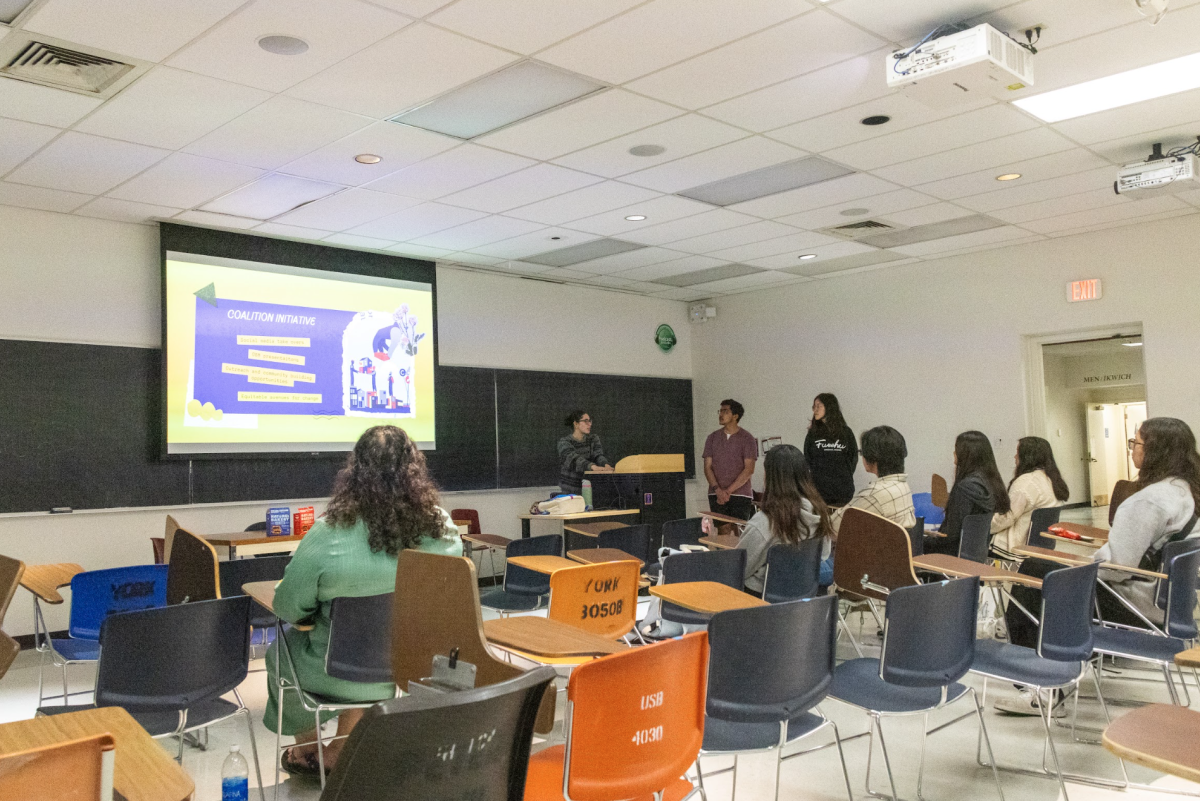Every morning, Dr. Pascal Gagneux shrugs into his lab coat, heads off to the UCSD School of Medicine and then spends his day dealing with a whole lot of monkey business — figuratively speaking, of course.
Dr. Gagneux, assistant professor of cellular and molecular medicine at the UCSD School of Medicine, studies evolutionary biology and primates. Specifically, he studies the role that glycans play on the surface of mammalian male reproductive cells. That’s right. He studies monkey sperm.
Glycans are a type of sugar molecule that control a huge portion of the reproductive process. For non-biology majors, this means that Gagneux is interested in the way mammals’ cells recognize each other, how this has changed through evolution and how it can affect reproductive capability. Gagneux is currently trying to answer the question: Do the different sugars on chimpanzee and human sperm affect reproduction? Can chimpanzee sperm provide the key to problems with human fertility?
Gagneux decided to study chimpanzee sperm as a result of the observations he made on the different mating systems of chimpanzees and humans, as well as their different sugar molecules. Because chimpanzees practice polygamy, there are much higher levels of sperm competition in chimps than in humans.
It’s a complex concept to grasp. “Given that the glycans on sperm are involved in mediating interactions between sperm and the female — her reproductive tract cells, immune system and ovum — I decided to focus on sperm glycans,” Gagneux said. By studying the differences between human and chimp sperm, especially the sugars on the outside of the sperm and how they bind to female reproductive cells, scientists can determine what helps sperm bind to eggs — potentially solving the problems that plague human fertility.
For Gagneux and his colleagues, the most difficult part of carrying out an experiment like this is obtaining live sperm from chimpanzees. It’s messy work.
“It requires training of captive chimpanzees by positive reinforcement,” he said. “Luckily the [chimpanzee] keepers consider it a form of enrichment.” Basically, keepers have to coax chimps to masturbate into a tube. (And you thought your job was tough).
Once the sperm is collected, Gagneux studies it under a microscope. He is particularly interested in chimpanzee sperm’s saitic acid and how it might help females choose the most compatible mate. Human cells create a similar saitic acid, but do not have the correct enzyme to produce the chimp’s version.
“Understanding how glycosylation affects fertilization is innovative and interesting,” said Jeffrey Esko, co-director of the UCSD Glycobiology Research and Training Center and Gagneux’s colleague for the past 10 years.
Sandra Diaz, senior lab technician in the Varki Lab and a colleague of Gagneux’s since 1998 when he joined the lab as a post-doc, said that his research is original in field of cellular medicine.
“Pascal is a very creative individual, not only in coming up with experiments to test his hypothesis, but also in the ways in which he illustrates them,” she said. “He builds models — sometimes huge, sometimes small, always interesting.”
Gagneux earned his masters in population biology and his doctorate on population genetics from Basel University in Switzerland. He has been studying the population genetics of West African chimpanzees since he came to UCSD as a graduate student 17 years ago. He was drawn to the school in part by Professor David Woodruff, who pioneered a method of amplifying mitochondrial and nuclear DNA from shed hair samples, allowing Gagneux to learn genotyping techniques.
He remained at the university for post-doctoral experience and eventually earned an assistant professorship.
“I like the open-minded curiosity so commonly encountered among researchers here, combined with the relative lack of hierarchical thinking [when] compared to European universities,” he said.
In the future, Gagneux wants to explore the parallels between reproduction and infection, comparing the “tricks” sperm uses to hide from the female’s immune response to the way successful parasites and pathogens conceal their true identity.
With a lab full of primate sperm, Gagneux clearly has no time to monkey around.
“An apple a day keeps the doctor away,” is a familiar saying to mothers everywhere attempting to sweet-talk their children out of shoving a fourth cookie down their throat. These same mothers cram reluctant feet into soccer cleats and lug shrieking seven-year-olds off to AYSO practice, hoping for an afternoon of supervised exertion. But what if it took more than a healthy diet and regular exercise to ward off childhood obesity?
Dr. Jeffrey Schwimmer, associate professor of pediatrics at UCSD and director of weight and wellness at Rady Children’s Hospital, published a paper in the journal Pediatrics on Sept. 20 that argued a radical new idea: obesity as a virus.
Schwimmer and his colleagues Charles Gabbert, John Arnold and Michael Donohue studied 124 children ages 8–10 to assess the relationship between a particular virus, adenovirus 36 (AD36) and obesity in children. The researchers hypothesized that if a child was to catch this virus, and subsequently develop an immunity to it via antibodies, they became more likely to have a higher body weight than children who were not exposed to the virus at all.
Childhood obesity is a huge public health concern in America, and — according to Schwimmer’s paper — obesity rates have more than tripled in the past three decades. It’s become such a widespread concern that Michelle Obama has made it a point to combat childhood obesity during her time as First Lady. In fact, the Centers for Disease Control and Prevention estimate that 17 percent of children and young adults are obese, which will shorten the child’s life expectancy by as much as 20 years if he or she should remain obese into adulthood.
Schwimmer was intrigued by this particular topic after some in the scientific community began suggesting a link between microorganisms and body weight regulation.
“I wanted to know — number one — do these results replicate? And — number two — are they relevant to children?” he said.
Schwimmer and his team recruited children from the San Diego area specifically for the study. The children were classified according to their body mass index percentile as either obese or non-obese, and the presence of AD36-specific antibodies was determined.
The results of the study revealed that 78 percent of children found to be AD36-positive were obese. In addition, 22 percent of obese children had the virus, compared to only 7 percent of non-obese children — statistics that supported an association between obesity and the presence of AD36 antibodies.
Although these results proved the researchers’ hypothesis, other possibilities for the link include increased susceptibility to infection within obese children, as well as an increased likelihood of lingering AD36 antibodies.
“There is a lot of research around nutritional and activity factors and sedentary factors — sleep, stress, certainly genetics — and there are other things that are speculated to play a role,” Schwimmer said. “It’s hard to actually prove something in people, because the only way to prove it is to do an experiment where you actually control the parameter.”
The biggest challenge to the researchers was securing funding. Many potential investors were skeptical of a hypothesis that suggested something other than poor diet and a sedentary lifestyle could cause obesity.
“Some people sort of oversold it, as if we were suggesting that this is the whole story underlying the obesity epidemic,” Schwimmer said. “And that’s certainly not at all what we’re suggesting. I think that the reality is [that] it is not going to turn out that any single factor is the whole story.”
Schwimmer hopes to better understand how, exactly, the virus affects or leads to increased body fat.
On a grander scale, however, Schwimmer wants to continue studying fatty liver disease or NASH (non-alcoholic steatohepatitis, or fatty liver disease), which is the most common form of liver disease in children. It was for his work with this disease that he was awarded an American Gastroenterological Association Young Investigator Clinical Science Award in May 2010, and it’s a condition for which he hopes to eventually find a cure.
“He is one of the leading researchers on NASH in children,” Dr. David Brenner, Dean of UCSD School of Medicine, said. “His study is the first to show a relationship between a viral infection and NASH. This will provide new insights into the mechanism of the disease.”







